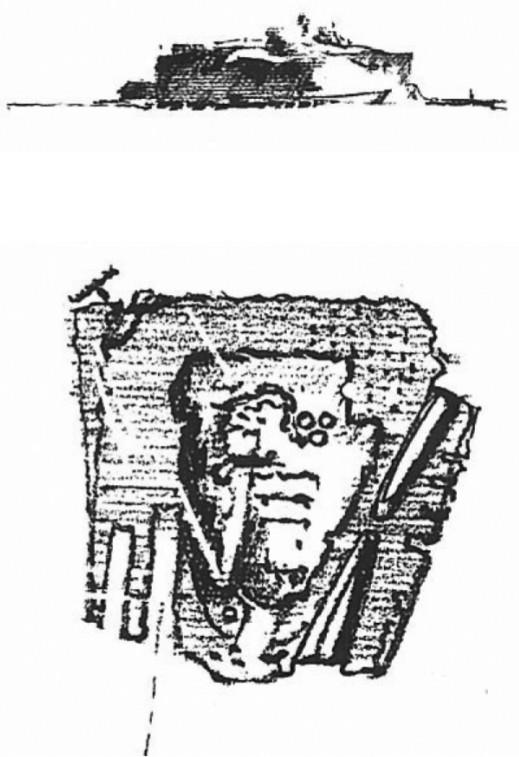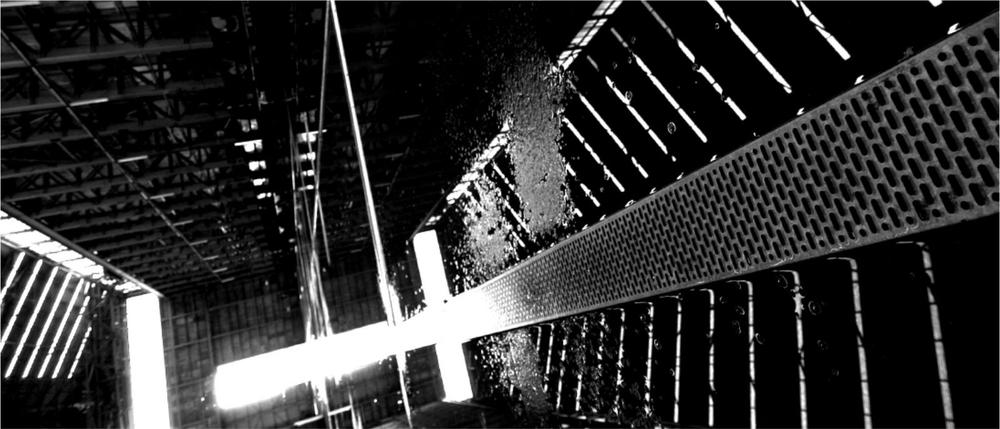INTRODUCTION
The world turns…and leaves a rusting, empty swing in the shadow of a smokestack.
Shifting economies have left the world’s post-industrial cities with abandoned sites that are both functionally and culturally vacant. These brownfields are typically dislocated, contaminated, and often construed as a danger to be made safe or an economic burden to be made profitable. They exist within the urban fabric, though through disuse or disconnection, they exist distinct from that fabric.
They are Urban Islands.
In a climate of increasingly interconnected homogeneity, Urban Islands present new challenges and opportunities for the cities in which they exist. The unique conditions of these sites, relics from previous modes of production and distribution, demand responses that are more expansive and more flexible than conventional practices of urban redevelopment and regeneration.
Cockatoo Island, a contemporary ruin within the city of Sydney, is one such Urban Island requiring an innovative approach. Its formal complexity reveals its diverse uses over time: convict prison, girls’ reformatory, city jail, boys’ training facility, a naval and commercial shipbuilding site and, during these times, a work place of thousands of ship workers and administrators. Few sites in Australia have hosted such a diverse and intense range of functions as Cockatoo.
In addition to this heritage, surrounded by the waters of the Sydney Harbour, this place is geographically special - it is, after all, an island. Ominously, this 3has made it an especially valuable piece of real estate, tagged with all the right commercial clichés: harbour views, water access, dress circle position, and more. In 1992, Cockatoo Island’s industrial operations ceased and for some time its future was unclear – was there a viable alternative to sale for private development? Abandoned and derelict until now, the Island is under the stewardship of the Sydney Harbour Federation Trust, a Federal Government agency created in 2001 (after much public campaigning) to rehabilitate and make public a number of disused naval sites around the Sydney Harbour. The Trust is dedicated to injecting Cockatoo Island with ideas, events and uses that uphold and extend its inherent magic.
The inaugural Urban Islands Studio on Cockatoo Island was conceived with these strategies in mind: to mesh making and reflecting, performing and installing; to interact with the island’s political, physical and ideological context, and to establish a continuity with the site and context outside the short life of the Design Studio. International guests from Costa Rica, Germany, Japan, Switzerland and the United States were invited to bring global knowledge and debate to this local context. Within the 12-day intensive studio period, participants were to inhabit the island, and within that time and space, develop real projects there. As it emerged, Cockatoo Island was an ideal host for a model of trial and error: interventions were immediate and the outcomes were impressive, low-impact and temporary. The diverse schemes produced were all at once possible and viable. Rather than a series of proposals for the same site, they were fragments, or cuttings, of a greater collage for inhabiting Cockatoo.
In parallel, we observed that the notion of cutting was a recurrent theme in Cockatoo’s past, not only evident in its diverse functions, but also in its physical form. Its sandstone core is a sculptural record of the impact of each era on its shape, cut and hewn to over time according to the requirements of program.
Cockatoo, stripped of activity, appears like a stone vessel of sheer sided sandstone, with a low-lying almost water-level apron surrounding it. It is a place of cutting. Cutting down to form the dry docks lying nose to nose. Cutting down to form a battery of silos deep within the body of the stone. 4Cutting through to form tunnels. Cutting to form slipways and housings for heavy machinery. Cutting down the sides of the natural contours to form cliffs, like fortress (or gaol) walls, and spilling out beyond its old high watermark to form its promenades.2
REFLECTIONS ON A MARITIME CITY
But beyond a formal quality, the collation of cuttings of program is a responsive strategy for inhabiting Urban Islands. This book brings together ideas, research and designs that assemble a confederation of cuttings for Urban Islands, with Cockatoo Island as the experimental subject.
The first Part of the book addresses urban islands as a typology of the post-industrial city, and the following two Parts address Cockatoo Island specifically.

the crown, sheer-sided walls and apron of Cockatoo Island. By Richard Leplastrier.1
5All contributions are original research and represent an important step in developing academic and design discourse on Urban Islands in Sydney and around the globe. Part I presents theoretical approaches to conceiving new modes of planning, commerce and design for Urban Islands and urban dimensions of commerce and culture are reframed through themes of paradox, branding and ‘soft’ architecture. Part II presents theoretical and poetic reflections on the past and future of Cockatoo Island, portraying the complex state of intrigue that surrounds Cockatoo currently. Part III presents pedagogical critiques and design works from the Urban Islands Studio and situates the embedded urban studio as a model of urban intervention and social contribution.
One work that highlights the nature of the Urban Islands Studio is the temporary installation Soft Inversions that transformed the vast Turbine Hall on Cockatoo Island into a kaleidoscope of refracted light, sound and animated structures. Its immersive, ephemeral experience was just the first flickering of many such temporary ‘cuttings’, intended to bring forth from this ruin a vibrant, animated Urban Island.
Beyond Cockatoo, the Urban Islands Project2 is an innovative framework for dialogue, experimentation and participation in the remaking of cities. It is dedicated to exploring strategies of engagement with sites and cities across cultures and around the globe. From Mumbai to Tokyo, Bogotá to Berlin, Sydney to San Jose, Urban Islands collaborators are engaging with the conditions and contents of shifting cityscapes, facing the challenges of urbanism in an increasingly connected world.
Welcome to Urban Islands.
JOANNE JAKOVICH , OLIVIA HYDE & THOMAS RIVARD
URBAN ISLANDS PROJECT6

1 Reflections on a Maritime City: An appreciation of the Trust lands on Sydney Harbour, published by Interim Sydney Harbour Federation Trust, 2000.
2 www.urbanislands.info; Collaborations and proposals welcome.